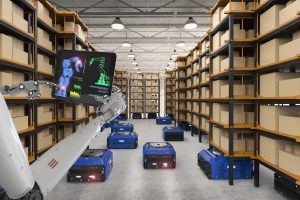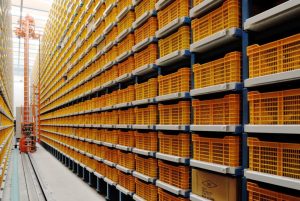The rise of eCommerce has increased the level of returns that retailers have to deal with. Many customers buy multiple sizes online and, at best, only keep the one size that fits. Traditional store-based retailing had evolved to provide changing rooms to overcome the issue but online is still relatively new.
The warehouse now acts as a processing site to maximise the value of all the products handled through the reverse logistics process. The task for the warehouse operations is to:
- Receive unwanted goods, assess their condition and process accordingly
a. Put back to stock ‘Good items’ that can be resold at full price
b. ‘Make good’ via repackaging ‘Good items’ that can be resold at full price but require better packaging to enable sale to the next customer
c. Forward non-saleable items to supplier, disposal, charity, staff sales etc. as an exit route for items that cannot be resold with the aim of recovering as much value as possible - Credit the customer’s bank account. The customer has almost always already paid for the goods, unlike a traditional store environment where the items are typically tried on for fit pre-sale and are then returned to the shelf by in-store staff
Some retailers are taking steps to minimise the reverse logistics flows but it’s hard to take too much of a stand against consumers. The sales process needs to be easy and risk free to secure an order. Approaches include providing improved information on the website to assist the customer identify their optimal size with more images of the product accompanied by comprehensive fit descriptions.
Retailers are also using their vast data on customers to compare the fit of the prospective purchase to previously ordered items. Omnichannel retailers leverage their store presence for customers to touch and feel the product before purchasing, particularly useful for technology items.
It has almost become orthodoxy that returns are a natural consequence of online trading. So retailers just need to find the most efficient way of dealing with reverse logistics. Standard Operating Procedures (SOPs) are integral to quickly assess and sort products based on their condition. These are supported with tools like bar-coded returns notes to swiftly and accurately identify customer orders. The returns processing workforce needs to be able to flex significantly in line with volumes (think Black Friday and Cyber Monday) so the reliance on agency staff requires a process that is simple and quick to learn.
IT systems must also be able to handle the complexity of the process and this is an area that has led to issues for retailers. The systems need to be able to reflect the following:
- Credit is issued to the customer after taking back ownership of the product (ERP / web portal)
- Website to be updated reflecting new stock level, especially if the item was previously sold out or “low stock” (web order platform)
- Sales data to be adjusted, reflecting a new net sales position (ERP)
- Warehouse stock position to be updated with the item relocated to a storage bin to allow it to be allocated to another order (WMS)
Our team have seen issues occur in the past where:
Through working with warehouse manager, our team have come across horror stories that really drive home the importance of fully assessing returned product. One example included a customer replacing a TV with bricks and pieces of wood to simulate the weight and balance of the product. This is an extreme scenario, but it is quite common to find customers who return products in a sub-standard state.
Sustainability has become an important issue and there is growing consensus around the need to build ‘circular economies’, designed to minimise waste. We believe that this will have a significant impact on warehouses in the future. There are many live examples of the circular economy in action today:
Warehouses are now integral to reverse logistics but the demands on them will increase as the circular economy takes further hold. Warehouses will be required to do a greater variety of value-add activities beyond the relatively simple processing and returning to stock of unwanted items ordered online. It is important for companies to design, equip and staff their warehouses appropriately to fulfil the needs of their reverse logistics obligations.



